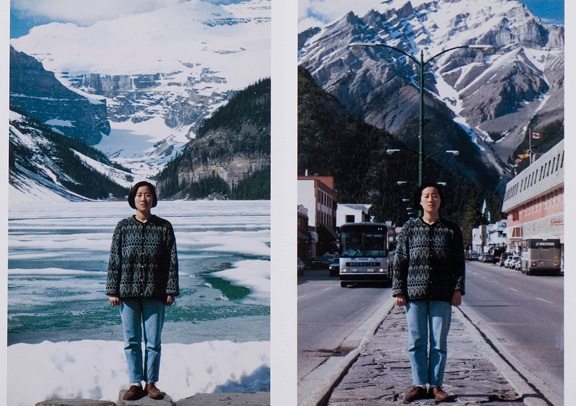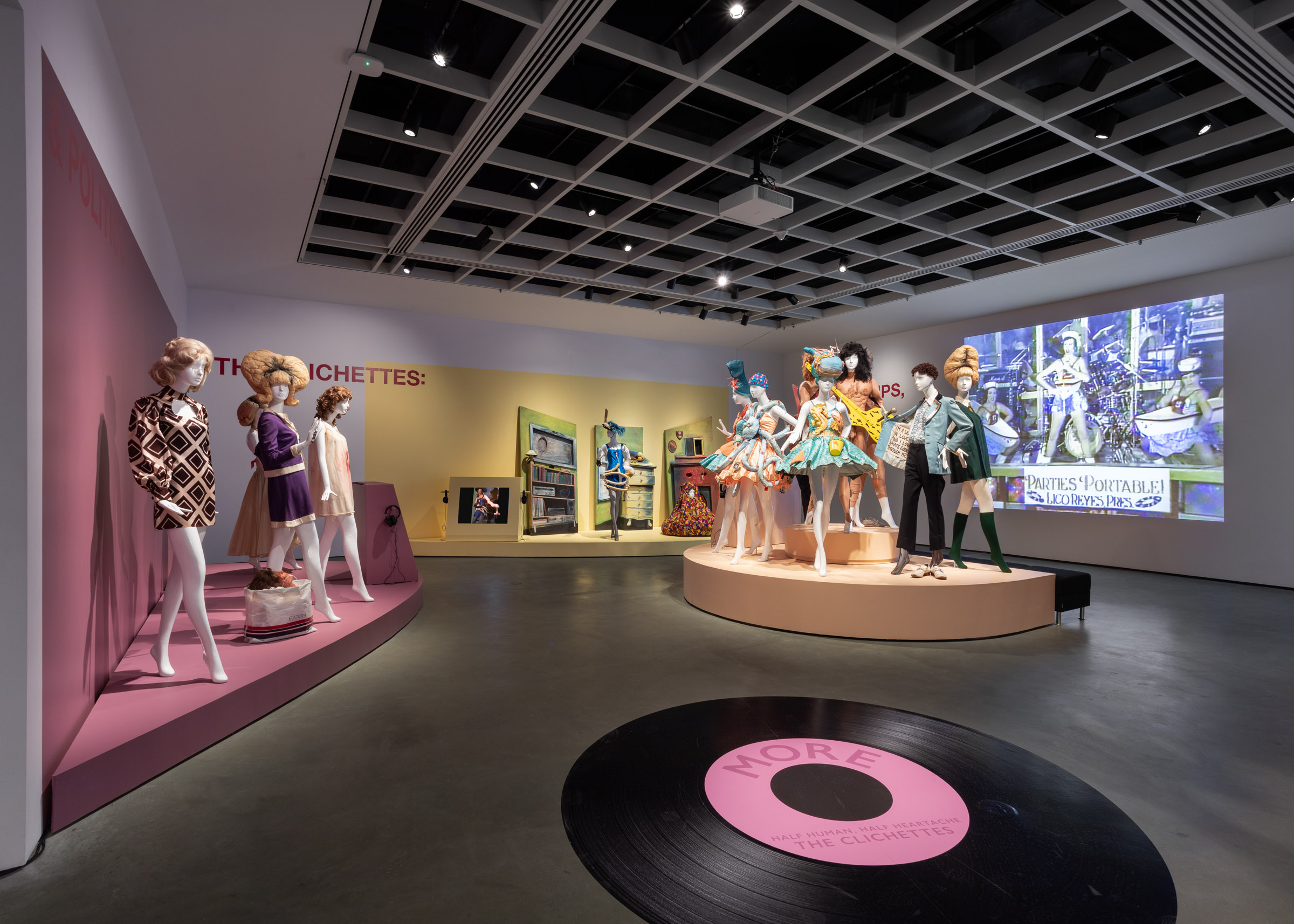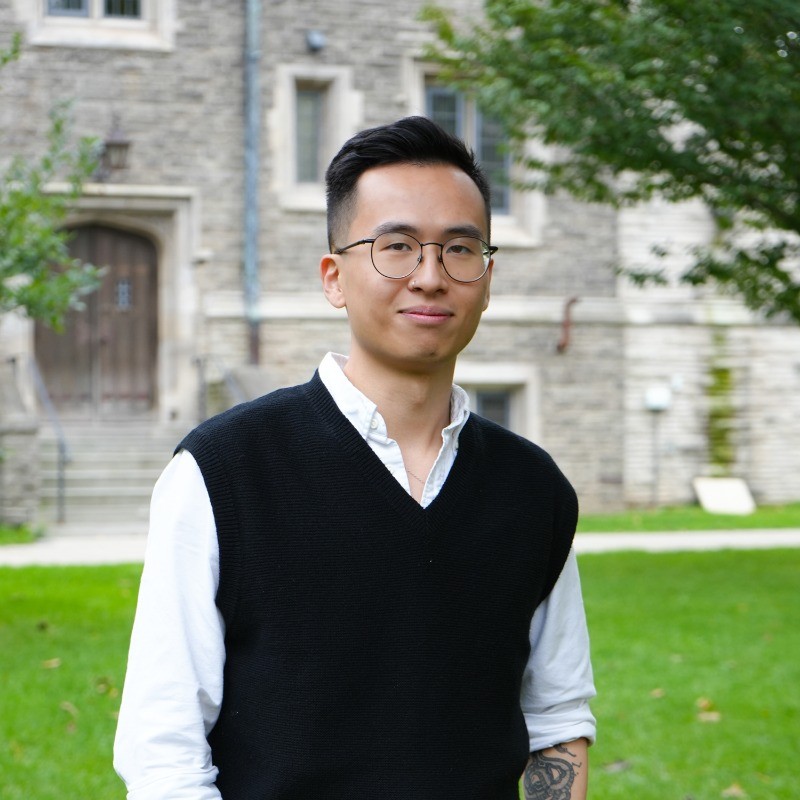So, where are you from? Nation, Place, and Belonging
March 3, 2015

So, where are you from? Nation, Place, and Belonging
A guest blog by Gio Diokno, 4th year Theatre and Film Student, McMaster University
Over the course of the past year, I’ve been conducting research that looks into how self-representation can serve as a means to connect to others. Continuing in this vein, I’d like to connect some of my personal experiences to the politics taken up in Jin-me Yoon’s postcard series Souvenirs of the Self (1991), one of the works featured in This is Me, This is Also Me.
So where are you from?
– Milton.
No, I mean, where are you from?
– California.
Oh! So you’re American.
– No.
What are you, then?
The transcript above is an example of conversations I’ve encountered. You can tell when these types of conversations are innocuous inquiries about where one goes home for breaks and holidays, and when they’re invasive investigations into one’s background. I find these types of conversations extremely alienating, as though my identity is something to be scrutinized. It makes me feel as though I’m something foreign; something to be identified, categorized, and determined as “not your typical Canadian.”
Through her postcard series, Jin-me Yoon addresses the notion of bodies that appear foreign and that are subject to racialization. Racialization can be understood as how people’s bodies are associated with ideas based on race. In the postcards, Jin-me Yoon juxtaposes her body against landscapes and landmarks in the Canadian Rockies. Her body standing against the vast landscapes and the idea of these images as postcards establish a foreign tourist aesthetic. The images ask us to question how we read Jin-me Yoon’s body in relation to such tourist sites. What visual cues prompt us to read bodies as foreign in relation to a space? What do we associate with “fellow Canadians” versus “tourists”? Why are we compelled to make such distinctions in the first place?
Part of the issue lies within the concept of Canadian identity and how society views certain bodies to be included and excluded in this concept. With a New Brunswick university professor recently claiming that Asian Canadians are changing the British character of Vancouver[i], it isn’t difficult to see how certain bodies are read in different ways within the space of Canada. Most notably, the continued erasure of Indigenous groups in the discourse of “Canadian identity” is evident in how Asian migrants are viewed as invasive in relation to British settler culture, which stands as the historicized “standard culture” of Canada.

Within this construction of who fits within the idea of Canadian identity, as an immigrant, I occupy a very complicated space within Canadian society. On the one hand, our bodies are seen as foreign and invasive by resident settlers; on the other hand, we must also be conscious of the role we play in contemporary settler colonialism and how we as outsiders play a role in occupying Indigenous land.
The juxtaposition of Jin-me Yoon against the tourist sites evoke the nuanced sense of belonging that certain migrants feel in a variety of spaces. The postcards incite a discussion of how certain spaces can be alienating for a select population of fellow Canadians, as a result of a constructed notion of Canadian identity.
Here are some questions to think about in relation to how we read ourselves and others in relation to Canadian spaces:
- Consider the moments that produce a fleeting feeling of belonging, a moment documented to remind us of our inclusion into Canadian society. Now, what is poignant about these moments that lead us to feel “Canadian?”
- What circumstances compel us to question our own presence within Canadian society?
- Finally, where, when, and why do we subject the presence of some but not others to scrutiny, and to whom do we tend to direct these questions?


McMaster Museum of Art wins Exhibition of the Year for The Clichettes: Lips, Wigs and Politics
December 2, 2025
On Monday, December 1, 2025, Galeries Ontario / Ontario Galleries (GOG) announced the winners of the 48th Annual GOG Awards and the McMaster Museum of Art (M(M)A) took away the top award for the Exhibition of the Year (Budget Over $50K) for the Fall 2024 exhibition The Clichettes: Lips, Wigs and Politics produced in partnership […]

The Creative Process: Well-being through art with the McMaster Museum of Art
August 22, 2025

McMaster Museum of Art Welcomes New Communications Officer Jeff Jung Sing Chow
July 11, 2025





